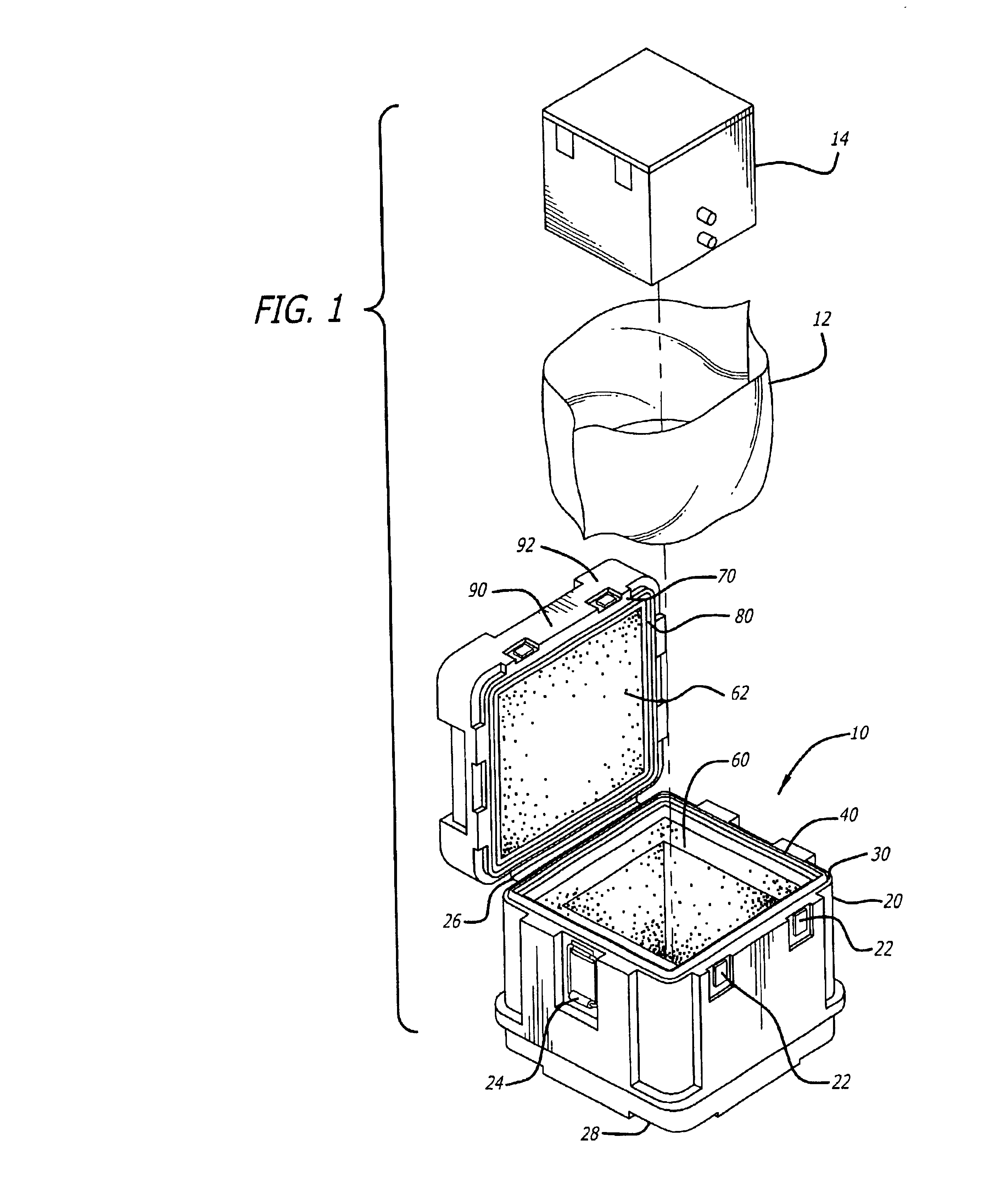Multiple seal storage and transport container
a technology of transport containers and seals, applied in the field of storage containers, can solve the problems of improper storage and transportation of oxygen generating canisters, special care must be taken, smoke, smoldering,
- Summary
- Abstract
- Description
- Claims
- Application Information
AI Technical Summary
Benefits of technology
Problems solved by technology
Method used
Image
Examples
Embodiment Construction
[0019]FIG. 1 is an exploded view showing one exemplary embodiment of the container 10 of the present invention including a bag 12 which is a separate piece, and an object 14 to be stored and / or transported such as a wet cell alkali aviation battery. Bag 12 is a sealable plastic bag which is resistant to corrosive materials such as acid and alkali, and is obtained from Com-Pac International, P.O. Box 2707, 800 Industrial Park Road, Carbondale, Ill. 62901. Container 10 includes a base or body 20 and a lid or cover 90. Base 20 includes latches 22 including the portions of the latches on lid 90, and carrying handles 24 only one of which is shown. One or more hinges 26 rotatably connect base 20 to lid 90 so that the container can be opened and closed by opening and closing the lid down onto the base. Recesses formed into base corners 28 mate with corresponding raised areas 92 on the corners of lid 90 such that the containers can be neatly and relatively securely stacked as shown in FIG. ...
PUM
 Login to View More
Login to View More Abstract
Description
Claims
Application Information
 Login to View More
Login to View More - R&D
- Intellectual Property
- Life Sciences
- Materials
- Tech Scout
- Unparalleled Data Quality
- Higher Quality Content
- 60% Fewer Hallucinations
Browse by: Latest US Patents, China's latest patents, Technical Efficacy Thesaurus, Application Domain, Technology Topic, Popular Technical Reports.
© 2025 PatSnap. All rights reserved.Legal|Privacy policy|Modern Slavery Act Transparency Statement|Sitemap|About US| Contact US: help@patsnap.com



